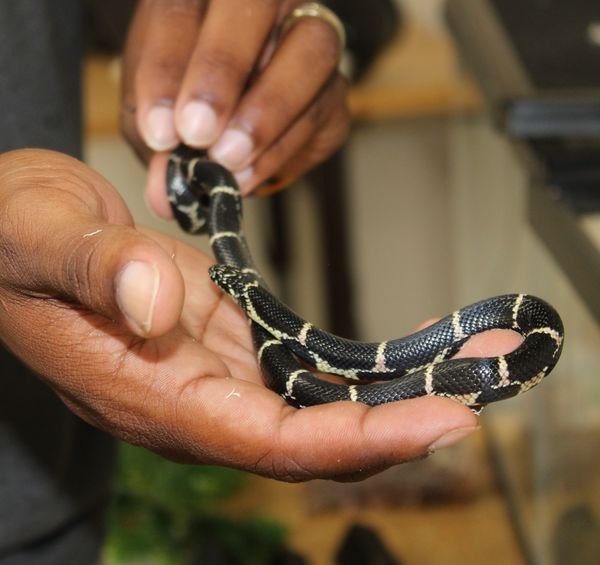In the diverse and often mysterious realm of reptiles, the term “flea snake” may seem enigmatic to many. This elusive creature, also known as the “flea-like snake,” is not only intriguing but also embodies a unique blend of ecological significance and evolutionary marvel. Despite its relatively obscure status, the flea snake has captured the interest of herpetologists and nature enthusiasts alike. In this comprehensive article, we will delve into the world of flea snakes, exploring their biology, behavior, ecological role, and the challenges they face in the wild.
1. Understanding Flea Snakes
1.1. Taxonomy and Classification
The term “flea snake” is a bit of a misnomer in scientific circles. The creature referred to by this name is more accurately known as the “Tetracheilostoma carlae”, commonly known as the “flea snake.” This small, enigmatic snake belongs to the family “Typhlopidae,” which includes the blind snakes. The family is characterized by their burrowing habits and relatively small size.
- Scientific Classification:
- Kingdom: Animalia
- Phylum: Chordata
- Class: Reptilia
- Order: Squamata
- Family: Typhlopidae
- Genus: Tetracheilostoma
- Species: T. carlae
1.2. Physical Characteristics
Flea snakes are distinguished by their tiny size and slender bodies. They are often described as resembling worms or larvae more than traditional snakes. Key physical characteristics include:
- Size: Adult flea snakes typically reach lengths of 10 to 15 centimeters (4 to 6 inches). Their small size is one of the reasons they are often overlooked in their natural habitat.
- Coloration: They exhibit a range of colors from light browns and grays to more vibrant hues depending on their environment. Their coloration often provides excellent camouflage, blending with the leaf litter and soil of their habitat.
- Scales: The scales of flea snakes are smooth and shiny, contributing to their sleek appearance. This smooth texture aids in their burrowing behavior.
1.3. Habitat and Distribution
Flea snakes are predominantly found in the tropical regions of Central and South America. They thrive in environments that provide ample cover and moisture, such as:
- Rainforests: The dense foliage and high humidity of rainforests offer an ideal habitat for flea snakes. The forest floor provides both food sources and hiding places.
- Subtropical Forests: These areas offer similar benefits to rainforests but may have less dense vegetation.
- Secondary Forests and Agricultural Areas: Flea snakes can also be found in areas that have been disturbed by human activity, as long as there is sufficient cover.
2. Behavior and Ecology
2.1. Burrowing Habits
One of the most distinctive behaviors of flea snakes is their burrowing habit. Unlike many other snakes, flea snakes spend the majority of their lives underground. They use their smooth, cylindrical bodies to navigate through soil and leaf litter, where they hunt for prey and seek shelter.
- Burrowing Mechanics: Flea snakes use a combination of muscular contractions and scale movement to move through the soil. Their bodies are adapted to push through the ground with minimal resistance.
- Nesting: Flea snakes create shallow burrows or use existing ones made by other animals. These burrows provide protection from predators and harsh environmental conditions.
2.2. Feeding and Diet
Flea snakes are insectivores, meaning their diet primarily consists of insects and other small invertebrates. Their diet is crucial for controlling the populations of these organisms in their habitat.
- Prey: Their diet includes ants, termites, beetles, and other small arthropods. Flea snakes use their keen sense of smell to locate prey, and their small size allows them to pursue insects in tight spaces.
- Feeding Mechanism: They use their small, sharp teeth to grasp and swallow prey. Unlike some other snakes, flea snakes do not constrict their prey but instead swallow it whole.
2.3. Reproduction and Life Cycle
Flea snakes have a relatively simple reproductive cycle, with most species exhibiting oviparous reproduction, meaning they lay eggs.
- Breeding Season: The breeding season typically coincides with the rainy season, which provides ideal conditions for egg development and hatching.
- Eggs and Incubation: Female flea snakes lay a small clutch of eggs, usually in a hidden or sheltered location. The eggs are incubated by the warmth of the surrounding soil, with hatchlings emerging after a few weeks.
- Growth and Development: Hatchlings are miniature versions of adults and undergo a series of molts as they grow. They reach sexual maturity within a few years.
3. Conservation Status and Threats
3.1. Current Conservation Status
As of the latest assessments, flea snakes are not classified as endangered. However, their status can be influenced by several factors, and their conservation needs should not be underestimated.
- IUCN Red List: Flea snakes have not been extensively studied, and their conservation status is not well-documented on the International Union for Conservation of Nature (IUCN) Red List. Further research is needed to determine their population trends and conservation needs.
3.2. Habitat Loss and Degradation
One of the primary threats to flea snakes is habitat loss due to deforestation and land conversion for agriculture.
- Deforestation: The clearing of tropical rainforests for logging and agriculture disrupts the delicate balance of their ecosystem, leading to habitat fragmentation and loss.
- Agricultural Expansion: The expansion of agricultural land can lead to the destruction of natural habitats, reducing the availability of food and shelter for flea snakes.
3.3. Climate Change
Climate change poses a significant threat to flea snakes by altering their habitat conditions.
- Temperature Fluctuations: Changes in temperature can affect the availability of moisture in the soil, impacting the flea snake’s burrowing behavior and prey availability.
- Weather Patterns: Altered weather patterns can affect the breeding cycle and overall health of flea snakes.
3.4. Human Encroachment
Human activities, such as urbanization and mining, can further exacerbate the threats to flea snakes.
- Urbanization: The expansion of urban areas can lead to habitat destruction and increased human-wildlife conflict.
- Mining: Mining activities can cause severe ecological disruptions, including habitat destruction and pollution.
4. Flea Snakes in Culture and Science
4.1. Role in Scientific Research
Flea snakes are of interest to scientists for several reasons:
- Evolutionary Studies: Their unique burrowing adaptations and small size make them valuable subjects for studying evolutionary processes and adaptations in reptiles.
- Ecological Research: Understanding their role in controlling insect populations provides insights into the ecological dynamics of their habitats.
4.2. Cultural Significance
While flea snakes may not be prominent in mainstream culture, they hold significance in local folklore and traditions.
- Indigenous Knowledge: Indigenous communities in Central and South America may have traditional knowledge about flea snakes and their role in the ecosystem. This knowledge can provide valuable insights into the species and its conservation needs.
4.3. Conservation Awareness
Raising awareness about flea snakes and their ecological role can help garner support for their conservation.
- Educational Programs: Schools and nature centers can include flea snakes in educational programs to highlight the importance of reptile conservation and biodiversity.
- Conservation Campaigns: Conservation organizations can focus on flea snakes as part of broader campaigns to protect tropical ecosystems and their inhabitants.
5. How to Support Flea Snake Conservation
5.1. Support Habitat Protection
One of the most effective ways to support flea snake conservation is to contribute to habitat protection efforts.
- Support Conservation Organizations: Donate to or volunteer with organizations working to protect tropical rainforests and other critical habitats.
- Advocate for Sustainable Practices: Support sustainable agricultural and forestry practices that minimize habitat destruction and promote conservation.
5.2. Participate in Citizen Science
Citizen science projects can contribute valuable data to our understanding of flea snakes and their habitats.
- Report Sightings: If you encounter a flea snake in the wild, report your sighting to local conservation organizations or scientific institutions.
- Participate in Monitoring Programs: Join programs that monitor reptile populations and contribute to research efforts.
5.3. Educate Others
Raising awareness about flea snakes and their conservation needs can help build support for their protection.
- Share Information: Use social media and community events to share information about flea snakes and their ecological role.
- Engage with Local Communities: Work with local communities to promote conservation efforts and share knowledge about the importance of protecting reptile species.
6. Conclusion
The flea snake, with its unique adaptations and intriguing behavior, represents a fascinating aspect of the reptilian world. While it may not be as well-known as other snake species, its role in the ecosystem and the challenges it faces are worthy of attention and conservation efforts. By supporting habitat protection, participating in research, and raising awareness, we can contribute to the preservation of this enigmatic creature and the delicate ecosystems it inhabits. As we continue to explore and understand the diverse world of reptiles, the flea snake serves as a reminder of the incredible biodiversity that exists and the importance of safeguarding it for future generations.


